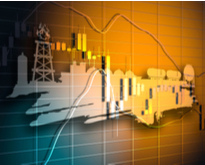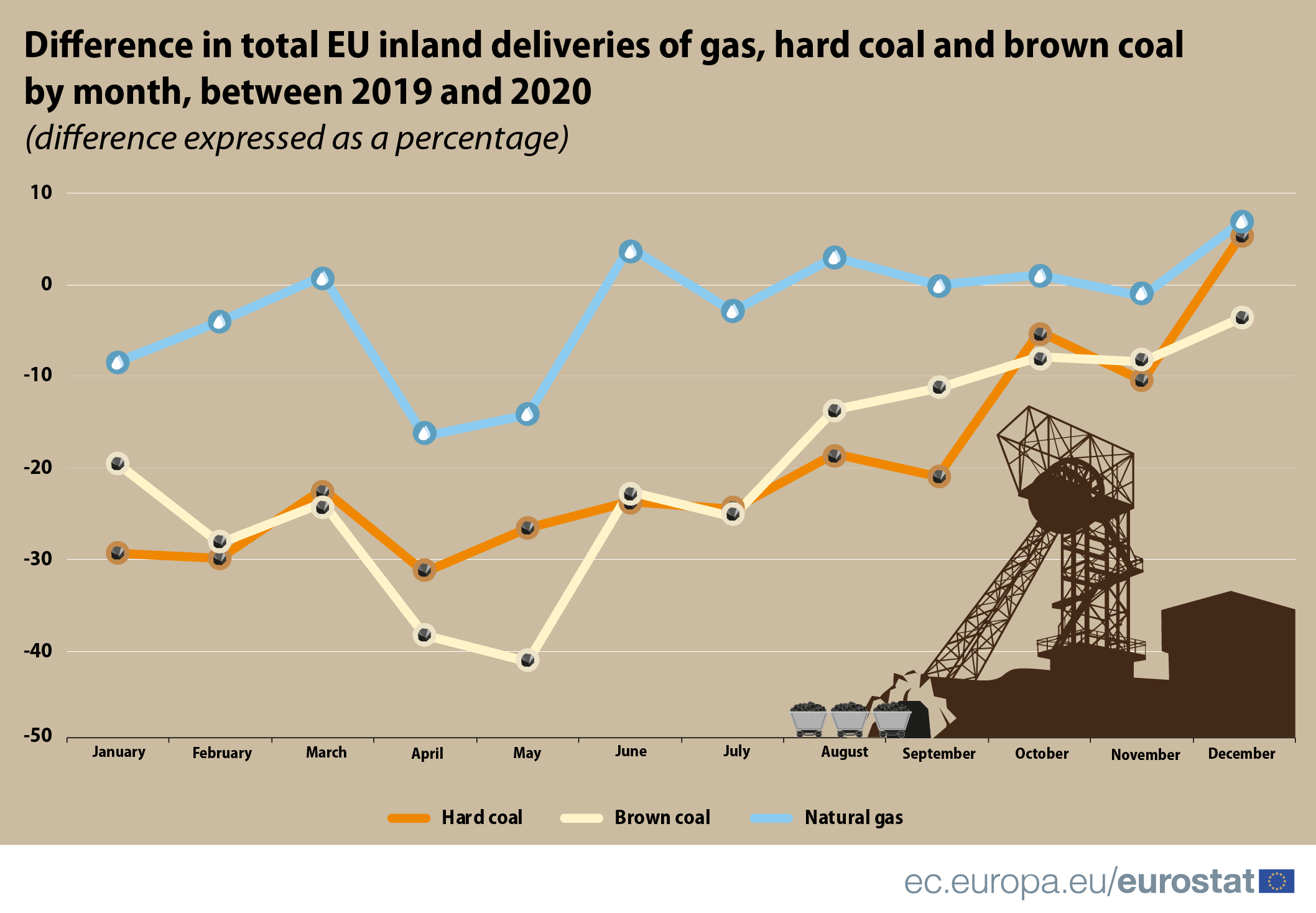
Since early 2020, restrictive measures have been taken to slow down the spread of COVID-19. These measures included the closure of factories, schools and restaurants, and required people to confine themselves in their homes. In late spring, many EU Member States began removing some restrictions following the first signs of recovery. By late autumn, however, the second COVID-19 wave had started and restrictive measures were again put in place. The EU’s fuel supply was adversely affected by these measures.
Inland deliveries of petroleum products
The oil industry was affected most by the pandemic and striking differences between 2020 and 2019 were evident. The most dramatic differences were seen in the deliveries of fuels for transport. In April 2020, deliveries of kerosene-type jet fuel dropped by more than 80% compared to the same month in 2019, while motor gasoline recorded a drop of nearly 50%. Gas oil and diesel oil also recorded a decrease of 20% over the same period. The reintroduction of restrictions by many Member States in autumn 2020 did not influence the deliveries of these fuels as much.
Source dataset: nrg_cb_oilm
Inland deliveries of gas and coal
Natural gas is used in the production of electricity and heat, and in the EU, close to a quarter of all electricity produced is generated from natural gas. The restrictions imposed by many EU Member States in spring 2020 had a larger impact on gas deliveries than the restrictions reintroduced in many countries in the second half of the year. In April 2020, the deliveries of gas decreased by 16% compared to April 2019, but by the end of 2020, the gas deliveries had completely returned to last year’s levels.
The production of hard coal is being phased out in many EU countries, for example by Germany and Spain, however, most EU countries still consume hard coal. Although the EU is using less coal overall, in 2020 close to two thirds of the coal used was delivered to electricity and heat generation plants.
A slight dip in inland deliveries of hard coal was observed in April and May. For brown coal, however, the reduction in deliveries was even more obvious during these months.
Source dataset: nrg_cb_gasm, nrg_cb_sffm
For more information:
- Eurostat Statistics Explained article on Energy statistics - latest trends from monthly data.
- Eurostat database on energy.
- ‘Inland deliveries’ refer to calculated gross inland deliveries, represented as the sum of production, recovered products (when applicable), the trade balance (imports - exports) and stock changes.
To contact us, please visit our User Support page.
For press queries, please contact our Media Support.



